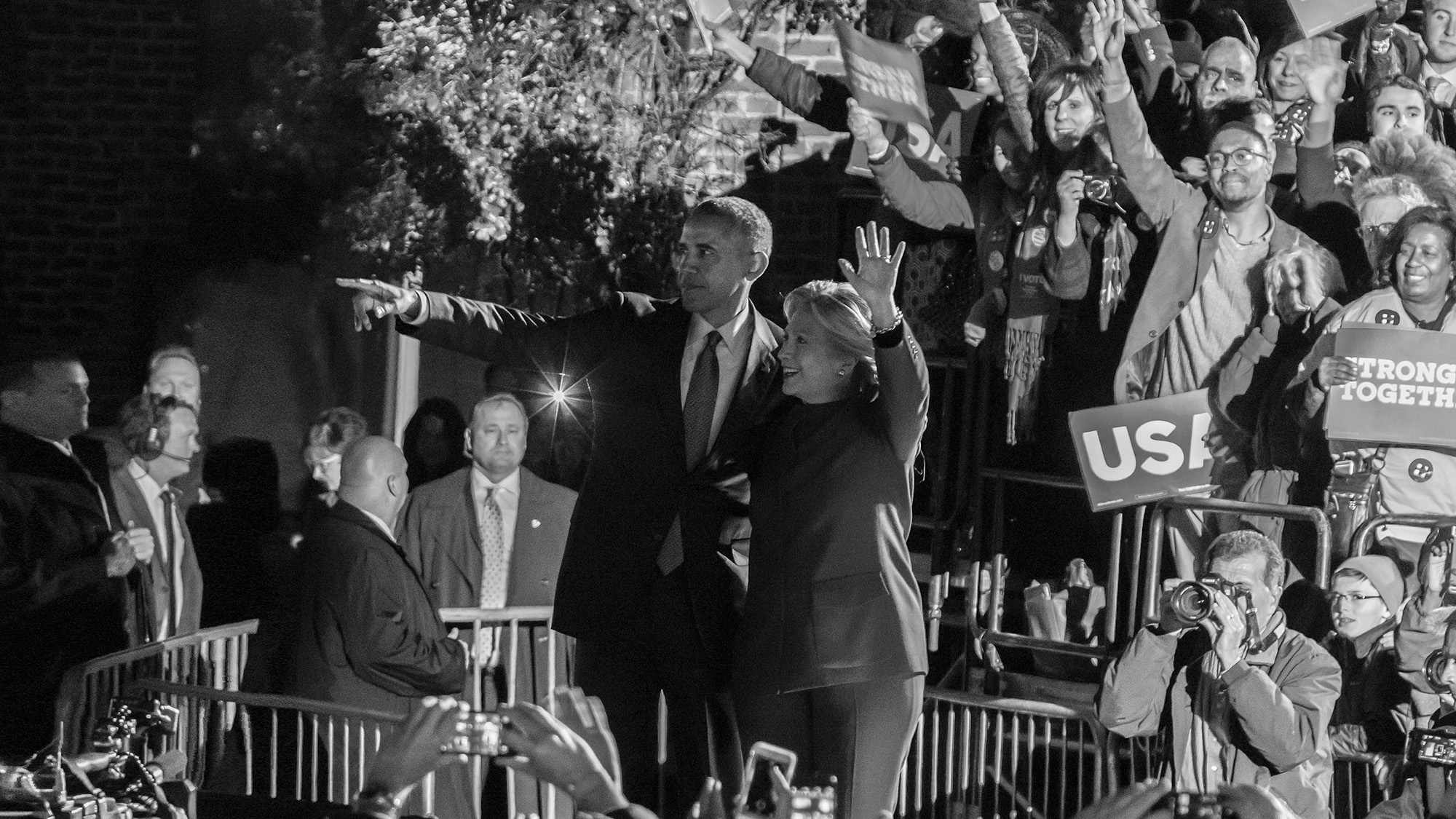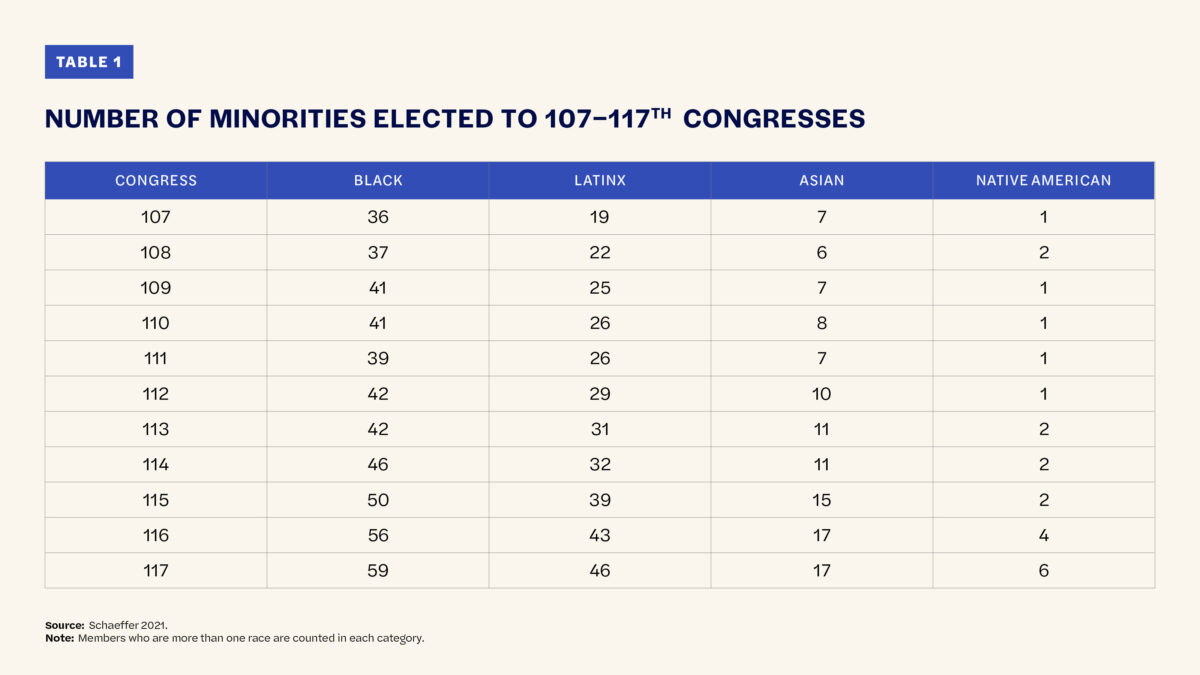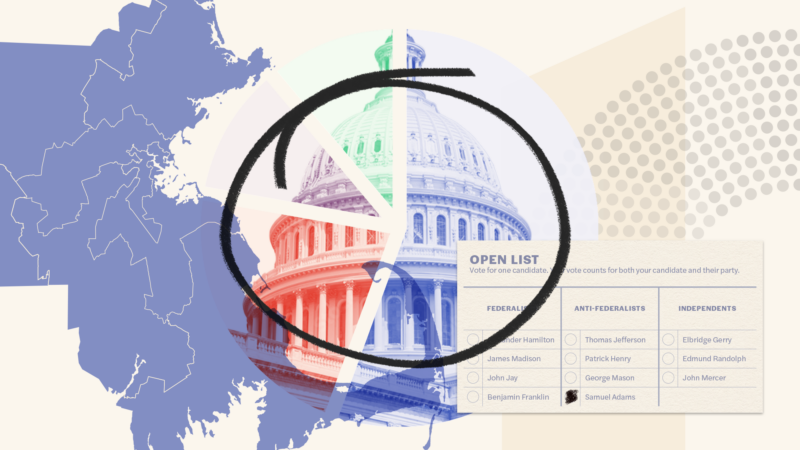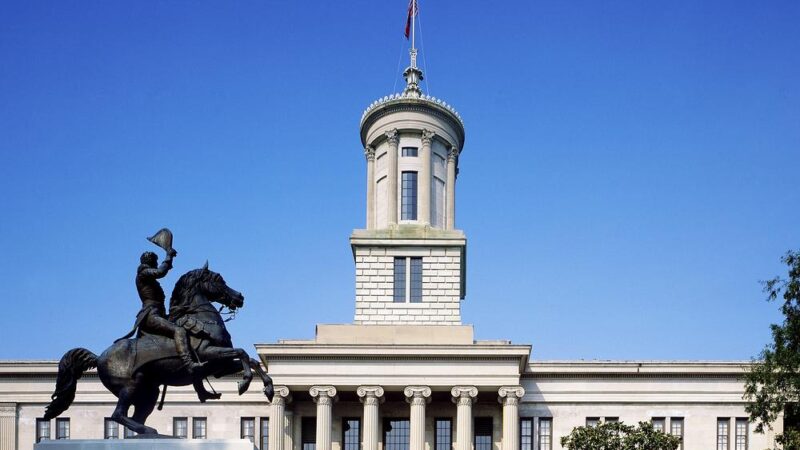How Did We Get Here: Women and Minorities in American Political Parties
- October 12, 2023
From More than Red and Blue: Political Parties and American Democracy

Abstract
The inclusion of minorities and women in political parties and as elected officials represents one of the most important developments of the twentieth/twenty-first century. The 1965 Voting Rights Act and political movements brought about this new diversity. The stronger clout and visibility of female and minority politicians on the left has also intensified the racial politics of the political right. States have adopted new restrictive voting laws. Republicans have used redistricting to win seats. Federal law was necessary to stop states from discriminating against minorities in 1965; it may be necessary today.
Introduction: Empowerment Over TimeIntroduction: Empowerment Over Time
This chapter examines the status of women and minorities in U.S. political parties. The inclusion of women and minorities has long represented an important democratic test for political parties in the U.S. The 1950 APSA task force report on political parties condemned the use of voter disenfranchising devices (e.g., poll-tax requirements, White primaries, and other intentionally limiting devices) but did not elaborate on how women and minorities were kept out of political offices by parties.1APSA Committee on Political Parties. 1950. Towards a More Responsible Two-Party System. American Political Science Association, 77 Jo Freeman writes there were campaigns to increase women’s representation in the leadership structure of the political parties starting in 1920. A special rule mandating that women represent 50 percent of the state committees was not universally adopted, but still helped women win appointments to state party committees. 2Freeman, Jo. 2000. A Room at a Time: How Women Entered Party Politics. Lanham, MD: Rowman & Littlefield.3Freeman, Jo. 2008. We Will Be Heard Women’s Struggles for Political Power in the United States. Lanham, MD: Rowman & Littlefield Publishers, 2008. State parties in turn controlled the selection of delegates to the national convention. In 1952, women were about 10-12 percent of the state party delegates at the national conventions.4Freeman, Jo. 2000. A Room at a Time: How Women Entered Party Politics. Lanham, MD: Rowman & Littlefield.5Freeman, Jo. 2008. We Will Be Heard Women’s Struggles for Political Power in the United States. Lanham, MD: Rowman & Littlefield Publishers, 2008. In the years that followed, there were attempts to diversify delegations in other ways as well. The all-White delegation from Mississippi was challenged by the biracial Mississippi Freedom Democratic Party in 1964 at the national convention. Martin Shefter6Shefter, Martin. 1994. Political Parties and the State the American Historical Experience. Princeton NJ: Princeton University Press. calls this a period of “New Politics” as Black protest in the South and dissatisfaction with northern, machine-led governments, the women’s movement, and youth opposition to the Vietnam War led to new party rules where states were enjoined to select delegates in relationship to their population in the state, and through primaries and open caucus elections.
The new rules helped diversify the conventions, but there was the perception that parties still discriminated against women and minority candidates in other ways. Blacks raised the issue of their underrepresentation in government during the 1984 and 1988 presidential campaigns of Jesse Jackson, a Black civil rights activist. In response, the Democratic Party selected Ronald H. Brown, a Washington lawyer, as its first Black national party chairman in 1989. Redistricting under the 1982-amended Voting Rights Act led to a record number of Blacks elected to Congress and in the South in 1992.7Lublin, David. 1997. The Paradox of Representation: Racial Gerrymandering and Minority Interests in Congress. Princeton, N.J: Princeton University Press.8Tate, Katherine. 2020. Concordance: Black Lawmaking in the U.S. Congress from Carter to Obama, Paperback Ed. Ann Arbor: University of Michigan Press. Black activism within the Democratic Party was critical in explaining civil rights enforcement.9Valelly, Richard M. 2004. The Two Reconstructions: The Struggle for Black Enfranchisement. University of Chicago Press. Walter, Barbara F. 2022. How Civil Wars Start. New York: Crown.
The literature on women finds some evidence that women candidates are not equally recruited by political parties, as women-candidate types report lower levels of contact by parties than male-candidate types.10Lawless, Jennifer L, and Richard L Fox. 2001, It Takes a Candidate: Why Women Don’t Run for Office. Cambridge University Press. Special efforts by women’s groups have helped the candidacies of women from both major parties. Emily’s List, a political action group founded in 1985, gives money to Democratic female candidates. In 2018, Elise Stefanik, a House Republican, created a political action committee to increase the number of women Republicans in Congress. Stefanik received some pushback from the party when she created this political action committee. Republicans generally reject identity politics strategies, including campaigning to increase diversity within its ranks. 11Wineinger, Catherine N. 2022. Gendering the GOP: Intraparty Politics and Republican Women’s Representation in Congress. New York: Oxford University Press. Republican women made up 16 percent of all Republicans in the 117th House, while Democratic women were 40 percent of their caucus. Traditional gender norms and prejudice may also discourage women from running as Republicans, though some research finds that the impact is complex.12Fulton, Sarah A. and Kostanca Dhima. 2021. “The Gendered Politics of Congressional Elections.”Political Behavior 43: 1611-1637.13King, David C. and Richard E. Matland. 2003. “Sex and the Grand Old Party: An Experimental Investigation of the Effect of Candidate Sex on Support for a Republican Candidate.” American Politics Research 31 (6): 595-612.14Lawless, Jennifer L. “Female Candidates and Legislators.” Annual Review of Political Science 18: 349-366. Thomsen15Thomsen, Danielle M. 2015. “Why So Few (Republican) Women? Explaining the Partisan Imbalance of Women in the U.S. Congress.” Legislative Studies Quarterly 40 (2): 295–323. contends that party polarization has discouraged moderate Republican women from running.

Since the 1980s and 1990s, the parties have become more diverse. The Center for American Women in Politics (CAWP) reports that women were once 5 percent of the U.S. Congress in the late 1980s, but now represent 27 percent.16Dittmar, Kelly. 2022. Women in Election 2022: Marking Midterm Progress. Center for American Women and Politics, Eagleton Institute of Politics. New Brunswick, NJ: Rutgers University. https://womenrun.rutgers.edu/2022-report. Blacks and minorities have also increased their numbers in Congress; the 117th Congress was the most racially and ethnically diverse to date (see Table 1). LGBTQ politicians have become more visible. Their growth came about because of the 1965 Voting Rights Act and social movements that turned into electoral ones. Blacks notably have centered their politics around the Democratic Party.17White, Ismail K., and Chryl Nicole Laird. 2020. Steadfast Democrats : How Social Forces Shape Black Political Behavior. Princeton, NJ: Princeton University Press. Women out-participate men today in elections18Wolbrecht, Christina, and J. Kevin Corder. 2020. A Century of Votes for Women : American Elections Since Suffrage. Cambridge, UK: Cambridge University Press., and minority voting has increased significantly over time.19Fraga, Bernard L. 2018. The Turnout Gap : Race, Ethnicity, and Political Inequality in a Diversifying America. Cambridge, UK: Cambridge University Press.
[W]omen were once 5 percent of the U.S. Congress in the late 1980s, but now represent 27 percent.
The new diversity of political parties is an important change. Government has increased its hearings on civil rights and social welfare because of its growing diversity.20Minta, Michael D., and Valeria Sinclair-Chapman. 2013. “Diversity in Political Institutions and Congressional Responsiveness to Minority Interests. Political Research Quarterly 66 (1): 127-140. Similarly, the research on women legislators finds that women are more likely to sponsor women’s interests and feminist bills than men.21Burrell, Barbara C. 1996. A Woman’s Place is In the House: Campaigning for Congress in the Feminist Era. Ann Arbor, MI: University of Michigan Press.22Dodson, Debra L. 2006. The Impact of Women in Congress. New York: Oxford University Press.23Swers, Michele L. 2002. The Difference Women Make: The Policy Impact of Women in Congress. University of Chicago Press.24Thomas, Sue. 1994. How Women Legislate. New York: Oxford University Press. Black Democratic candidates once found it difficult to win elections in the 1980s and 1990s, but less so today as racially conservative Whites have left the Democratic Party.25Stout, Christopher T. 2020. The Case for Identity Politics: Polarization, Demographic Change, and Racial Appeals. Charlottesville: University of Virginia Press. Even the Republican Party, disproportionately White and male (see Chapter 3 of this report), is diversifying some.
Backlash to Incorporation: Challenges to the Democratic ProcessBacklash to Incorporation: Challenges to the Democratic Process
The stronger clout and visibility of female and minority politicians on the left has also intensified the racial politics of the political right. While President Donald Trump ran a distinctive social issues campaign as opposed to an economic one in 2016, Republicans broadly have embraced Trump’s brand of social conservatism. The popularity of Trumpism is in part a backlash to the growth of minority politics in the U.S. today. Ashley Jardina finds that Whites who feel threatened by racial change and who identify with Whites are more supportive of Donald Trump when controlling for other factors, including racial bigotry.26Jardina, Ashley. 2019. White Identity Politics. Cambridge, United Kingdom: New York, NY, USA: Cambridge University Press. Since record numbers of women and minorities are contesting for elective office today, polarized group politics is expected to remain high in the U.S. Barbara F. Walter in How Civil Wars Start even imagines that a U.S. race war breaks out under a Black female presidential administration.27Walter, Barbara F. 2022. How Civil Wars Start. New York: Crown. That descriptive representation empowers minorities is one established research area, and that it can trigger political backlashes is recent thinking.
As examples of that backlash, critics point to the Republican Party’s attempts to redistrict their way into seats and impose tough voting laws. Republicans controlled the redistricting process in 19 states compared to 7 for the Democrats in 2020.28Grofman, Bernard. 2022. “Prospects for Democratic Breakdown in the United States: Bringing the States Back In.”Perspectives on Politics 20 (3): 1040-1047. The federal courts with new conservative majorities have turned away from strict enforcement of the Voting Rights Act, which would have constrained the potential negative effects of redistricting for minorities. The Supreme Court had nullified the VRA’s preclearance provision in 2013. Thus, the federal government can no longer object to and block racially gerrymandered plans proposed by local or state governments. Minorities can challenge plans based on Section 2 complaints, but thus far, no Section 2 claim has been sustained in the 2020 round of redistricting.29Warshaw, Christopher, Eric McGhee, Michal Migurski. 2022. “Districts for a New Decade—Partisan Outcomes and Racial Representation in the 2021-22 Redistricting Cycle.” Publius: The Journal of Federalism 52 (3): 428-451.
Since record numbers of women and minorities are contesting for elective office today, polarized group politics is expected to remain high in the U.S.
The 2022 districts have favored the Republicans but have not preserved the majority-minority districts that previously expanded representation for racial minorities. Blacks and Latinxs remain underrepresented by congressional maps.30Warshaw, Christopher, Eric McGhee, Michal Migurski. 2022. “Districts for a New Decade—Partisan Outcomes and Racial Representation in the 2021-22 Redistricting Cycle.” Publius: The Journal of Federalism 52 (3): 428-451. One analysis from Bloomberg news found that gerrymandering and other forces had the potential to reduce the number of Black majority Congressional districts from 22 to nine.31Korte, Gregory. 2022. “Black Districts Gutted as Suburban Flight Reshapes Congress Maps.” Bloomberg, July 20. https://www.bloomberg.com/news/articles/2022-07-20/black-districts-gutted-as-suburban-flight-reshapes-congress-maps Jim Clyburn (D-SC), who was first elected to Congress in 1992 in a majority-Black district, reports now his district is no longer majority-Black. The percentage of Blacks in his district dropped from 53 to 47 percent. A civilian redistricting board in Michigan eliminated two majority-Black districts. They are now 45 and 44 percent Black. The plan was challenged as discriminatory, but the Michigan state court dismissed the suit. The Supreme Court in June 2022 let Louisiana create only one majority Black district when it was possible to create two. Black representation in Congress may fall because of redistricting. Seven Black House Democrats did not seek reelection in 2022, and some retired because of redistricting. However, increasing numbers of Blacks are running in majority-White districts and winning.
Some also find restrictive voting laws to be a response to minority empowerment and changes in the Republican electoral coalition.32Bentele, Keith G. and Erin E. O’Brien. 2013. “Jim Crow 2.0? Why States Consider and Adopt Restrictive Voter Access Policies.” Perspectives on Politics 11 (4): 1088-1116.33Hicks, William D, Seth C. McKee, Mitchell D. Sellers, and Daniel A. Amith. 2015. “A Principle or a Strategy? Voter Identification Laws and Partisan Competition.” Political Research Quarterly 68 (1): 18-33. The Republican Party sought to adopt more restrictive voter laws in the aftermath of a record turnout of voters in the 2020 presidential election, which was about 7 percent higher than voter turnout in 2016. Republicans had previously adopted voter identification laws, which the Supreme Court had ruled were constitutional. Bernard Fraga34Fraga, Bernard L. 2018. The Turnout Gap : Race, Ethnicity, and Political Inequality in a Diversifying America. Cambridge, UK: Cambridge University Press. contends that these laws have not directly hurt minority voter participation, and others find their effects to be small.35Grimmer, Justin and Jesse Yoder. 2022. “The Durable Differential Deterrent Effects of Strict Photo Identification Laws.”Political Science Research and Methods 10 (3): 453-469.36Grimmer, Justin, Eitan Hersh, Marc Meredith, Jonathan Mummolo, and Clayton Nall. 2018. “Obstacles to Estimating Voter ID Laws’ Effect on Turnout.” Journal of Politics 80 (3): 1045-1051.37Highton, Benjamin. 2017. “Voter Identification Laws and Turnout in the United States,” Annual Review of Political Science 20:149-167.38Hajnal, Zoltan, Nazita Lajevardi, and Lindsay Nielson. 2017. “Voter Identification Laws and the Suppression of Minority Votes.” The Journal of Politics 79 (2): 363-742. Instead, the new laws are aimed at making it more difficult to vote by mail, which states expanded because of the pandemic in 2020. States like Virginia passed laws to end no-excuse vote-by-mail provisions. Other states are considering new voter identification requirements on mail-in-ballots, such as social security and driver’s license numbers. Arizona, Washington, and Virginia also have bills requiring proof of citizenship for voting. Arizona made it a law in March 2022. Voters now have to present a passport or birth certificate to vote. Proof of citizenship requirements would severely curtail access to the ballot, and the U.S. Justice Department is suing Arizona over it.
Reactions to minority empowerment may extend beyond voting access to impact election administration and oversight at the state level, though the research here is still developing and more is needed. Surveys reveal a significant number of Republicans believe the “Big Lie”39Cuthbert, Lane and Alexander Theodoridis. 2022. “Do Republicans Really Believe Trump Won the 2020 Election? Our Research Suggests that They Do.” The Monkey Cage [blog], January 7. https://www.washingtonpost.com/politics/2022/01/07/republicans-big-lie-trump., and baseless claims of election fraud have increased the risk of democratic breakdown in some Republican-controlled states.40Grofman, Bernard. 2022. “Prospects for Democratic Breakdown in the United States: Bringing the States Back In.”Perspectives on Politics 20 (3): 1040-1047.41Mickey, Robert. 2022. “Challenges to Subnational Democracy in the United States, Past and Present.”The ANNALS of the American Academy of Political and Social Sciences 699 (1): 118 – 129. Several states like Georgia have enacted laws to permit more partisan control over election procedures. Alabama, Arizona, Florida, Georgia, Kentucky and Oklahoma have passed election interference laws that challenge how elections are run and results are determined.42Brennan Center for Justice. 2022. Voting Laws Roundup: May 2022. May 26. https://www.brennancenter.org/our-work/research-reports/voting-laws-roundup-may-2022. The Republican Party in several states also nominated election deniers for state offices in the 2022 election cycle.
But parties continue to be the central actors in controlling state legislation governing our democratic process. If and how parties incorporate racial minorities still matters.
There were some signs of democratic resilience in 2022. Most election deniers lost in the midterm elections. In December, Congress also passed a law that clarifies how the Electoral College votes are to be counted, specifying that the vice president’s role is purely ceremonial. But state laws will make it easier for the party in power to contest state election results in the future. Citizens in some states would be able to initiate election audits and politicize the process.
Federal law was necessary to stop states from discriminating against minorities in 1965. Those protections may still be needed, given trends at the state level. States would be prevented from new forms of discrimination under the For the People Act and under the John Lewis Voting Rights Act, which passed the House in the 117th Congress. While Whites are no longer showing extreme prejudice against minority candidates, the voting power of disadvantaged communities should not be diluted. The For the People Act would require states to have early voting and vote-by-mail provisions. It would require states to automatically register voters when they provide information to government agencies, like the DMV. Yet the practical long-term effects are uncertain. Both bills, if enacted, would likely be challenged by states in the courts. The federal courts have become more conservative, and thus the future of federal control over state election practices is unclear.
Conclusion: Party Incentives and the FutureConclusion: Party Incentives and the Future
The analysis above supports an institutionalist approach to understanding U.S. party politics. Party officials are actors in their own right and enact policies outside of public opinion. In this case, Republicans have been motivated by their desire to win elections. We expect that from any political party. But the parties’ uneven history of incorporating women and minorities gives us reason to pause.
In the past, southern states had changed their constitutions to weaponize the state in favor of the White race. The contemporary period has seen many changes. But parties continue to be the central actors in controlling state legislation governing our democratic process. If and how parties incorporate racial minorities still matters. Political science gives us worrying context for the partisan incentives produced by minority empowerment and backlash. This, combined with false claims of election fraud, the courts’ role in permitting racial gerrymandering, and restrictive election laws makes the next set of elections concerning.
The analysis, views, and conclusions contained herein reflect those of the author(s) and do not reflect the views of the American Political Science Association or Protect Democracy.
Related Content
Join Us.
Building a stronger, more resilient democracy is possible, but we can’t do it alone. Become part of the fight today.
Donate
Sign Up for Updates Sign Up for Updates
Explore Careers Explore Careers
How to Protect Democracy How to Protect Democracy



